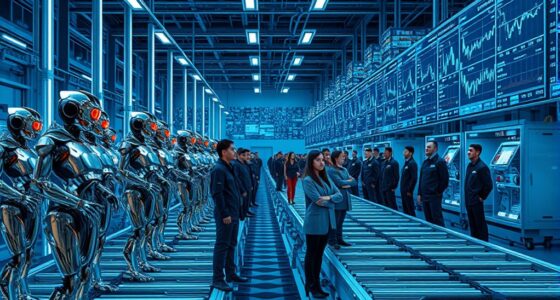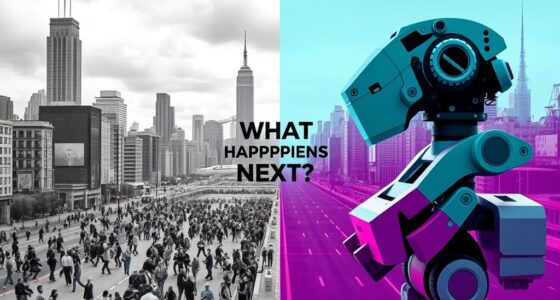Re‑Pricing Work When Cognitive Costs Collapse
Post‑Labor Economics Series • Policy Brief • July 2025
Executive Take‑Away
All the familiar price signals of the knowledge economy are breaking down.
A single GPT‑4o query now consumes ≈ 0.34 Wh of electricity and a fraction of a cent in cloud fees . OpenAI’s newest “nano” tier sells cognitive labor at $0.40 per million tokens—roughly $0.0008 per e‑mail paragraph . At U.S. industrial power rates (≈ 8 ¢/kWh) the energy cost of that paragraph is ~0.0003 ¢.
If Altman is right that intelligence will “converge to the cost of electricity”, knowledge work is about to follow the path of long‑distance phone calls—first to pennies, then to noise on the income statement.
For policymakers the question is no longer whether marginal cognition becomes nearly free, but how to run a labor market, tax system, and antitrust regime when it does.
For tech executives the question is how fast could wages, pricing power, and competitive advantage re‑price—and which moats survive when everyone has petaflops in their pocket.
1 | The Cost Curve Nobody Priced In
| Year | Flagship model | Inference price (input + output) | Electricity per 1 K tokens | Human‑equivalent cost* |
| 2020 | GPT‑3 (175 B) | ~$60 / M tokens | ~4.8 Wh | $20 (15‑min analyst) |
| 2023 | GPT‑4 Turbo | $10 / M tokens | ~1.6 Wh | $3.30 |
| 2025 | GPT‑4.1 nano | $2 / M tokens | ~0.6 Wh | $0.66 |
*Assumes U.S. software‑developer wage ≈ $60/hr ; 125 words ≈ 100 tokens.
A 30× price drop in five years dwarfs the historical Moore’s‑Law transistor cost curve. At electricity parity (8 ¢/kWh industrial) the hard floor for a million GPT‑class tokens is ≈ $0.005—400× beneath the 2020 price.
Why the Curve Bends Exponentially
- Inference‑specific ASICs (Nvidia Blackwell, Google TPU‑v5, Cerebras WSE‑3).
- Model distillation—trimmed “nano” variants retain 80 % of capability at 10 % compute.
- Batching + speculative decoding slashes per‑token latency and energy.
- Robotics flywheel—robots that build datacenters drive capex toward self‑reproduction, as Altman notes.
2 | Macroeconomic Whiplash Scenarios
| Impact Channel | 2026–30 Shock | Policy Risk if Unmanaged |
| Labor pricing | Knowledge‑worker wage premium compresses 30‑50 % in tradable services (coding, legal drafting, design). | Wage‑tax base erosion; widening gap between AI‑augmented “super‑workers” and displaced mid‑skill staff. |
| Corporate margins | Early adopters realize 5‑10 pp EBIT lift from AI “cost of goods sold” falling. | Windfall‑profit concentration; antitrust scrutiny of AI‑compute gatekeepers. |
| Inflation dynamics | Deflation in digital services; potential stagflation if goods/services split widens. | Central banks mis‑gauge output gaps, mis‑set rates. |
| Trade balances | Nations with cheap, clean power export “virtual labor”; energy grids become comparative advantage. | Carbon leakage if dirty grids under‑price AI; WTO disputes over “cognitive dumping”. |
3 | Re‑Designing the Fiscal Regime
3.1 From Payroll Tax to Kilowatt Tax
- Problem: U.S. federal revenue: ~ 46 % comes from income + payroll taxes. A 25 % wage‑share drop by 2030 blows a $500 bn annual hole.
- Solution: Shift to consumption‑based levies on compute and electricity used for large‑scale inference.
- Proposal: 0.3 ¢ per kWh surcharge on Frontier‑Model datacenters, earmarked for worker transition funds.
3.2 Intangible VAT
Tax final AI outputs, not labor inputs. EU exploring “digital value‑added tax” pilot in 2027 budget cycle.
3.3 Capital Subsidy Rebalance
Today’s tax code often favours equipment over payroll. Equalise by phasing out accelerated depreciation for AI hardware unless firms show net job creation or wage growth.
4 | Corporate Moats in a $0 Cognition World
| Old Differentiator | Future State | New Differentiator |
| Headcount scale | Liability (high fixed cost) | Proprietary data, distribution loyalty |
| Coding talent pool | Parity via agents | Domain‑specific RLHF, regulatory compliance |
| Price power | Erodes as rivals adopt same models | Energy contracts, custom silicon, trust & brand |
Executives should vault the race to zero:
- Pre‑buy renewable power PPAs—hedge against compute electricity price shocks.
- Negotiate cloud spot‑compute floors indexed to wholesale power, not list API prices.
- Invest in data regimes (clean, private, unique) that SSE models can’t scrape.
5 | Safeguarding Workers and Demand
Retraining alone cannot absorb a wage collapse at this speed.
- Inclusive Income Triggers: Index automatic cash transfers to AI adoption metrics (e.g., percent of national compute used for task automation).
- Wage‑Insurance 2.0: Replace 50 % of lost salary for displaced mid‑skill workers for two years; funded from kilowatt levy.
- Skill Dividend Accounts: Firms contribute tokens/compute credits to employees—turn job risk into personal AI leverage.
6 | Regulatory Guard‑Rails for the Take‑Off
| Domain | Immediate Action (2025‑26) |
| Transparency | Mandate reporting of per‑query energy + water (EU AI Act Article 54 extension debate). |
| Market Power | Launch Compute Concentration Review akin to telecom spectrum caps; prevent hyperscalers from hoarding energy‑site permits. |
| Consumer Protection | Update unfair‑pricing laws to cover AI‑generated services that undercut labor at predatory rates. |
| Global Coordination | Embed kilowatt‑equivalent tariffs in WTO e‑commerce talks to deter carbon‑intensive “cognitive offshoring.” |
7 | Strategic Choices for Policymakers & Boards in 2025
| Decision | Payoff | Missed Opportunity If Deferred |
| Lock in long‑term renewable PPAs for national AI clusters | Energy‑cost parity drives FDI to your jurisdiction | Lose AI export share to low‑cost grids (Nordics, Québec) |
| Draft legislation to pivot payroll taxes to compute levies | Stabilises social‑security funding | Sudden revenue cliff 2028‑30 |
| Pilot Inclusive‑Income triggers linked to AI adoption indices | Maintains aggregate demand amid wage squeeze | Secular stagnation despite productivity boom |
| Anti‑concentration rules on AI compute | Prevents rent extraction, promotes competition | De‑facto cognitive oligopoly |
8 | Conclusion—When the Meter Spins Off
The last time a technology promised to become “too cheap to meter” was nuclear power in the 1950s. That forecast fizzled. AI inference won’t. Every indicator—silicon R&D roadmaps, energy curves, model‑compression breakthroughs—points to marginal cognition converging on the price of electrons.
Societies that act now to re‑price work, revenue, and competition for a near‑zero cognitive‑cost world will harvest the productivity boom without detonating their tax bases or labour markets. Those that wait risk discovering that when intelligence becomes free, unprepared economies pay the highest price.
Call to Action: I’m assembling an Energy‑Indexed Cognition Taskforce with regulators, utilities, and CFOs to prototype kilowatt‑based tax pilots. Subscribe at thorstenmeyerai.com/newsletter to receive the draft framework and join the consultation.
Citations
- Altman, S. “The Gentle Singularity.” Blog post, Jun 2025 – energy per ChatGPT query (0.34 Wh).
- Wired. “How Much Energy Does AI Use? The People Who Know Aren’t Saying.” Jun 2025 – industry disclosure gaps.
- OpenAI. “API Pricing.” Accessed Jun 2025 – GPT‑4.1 pricing tiers.
- EIA. “Average Price of Electricity to Ultimate Customers (Industrial).” Mar 2025 – 8.15 ¢/kWh U.S. average.
- Qubit Labs. “How Much Do Software Developers Make?” Nov 2024 – $55–65/hr mid‑level U.S. wage.
- Indeed. “Software Engineer Salary in United States.” May 2025 – avg. $123.6k/year.
- OpenAI. “ChatGPT Pricing FAQ.” May 2025.
- CloudZero. “The State of AI Costs in 2025.” Apr 2025 – 36 % YoY AI budget rise.









